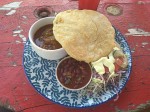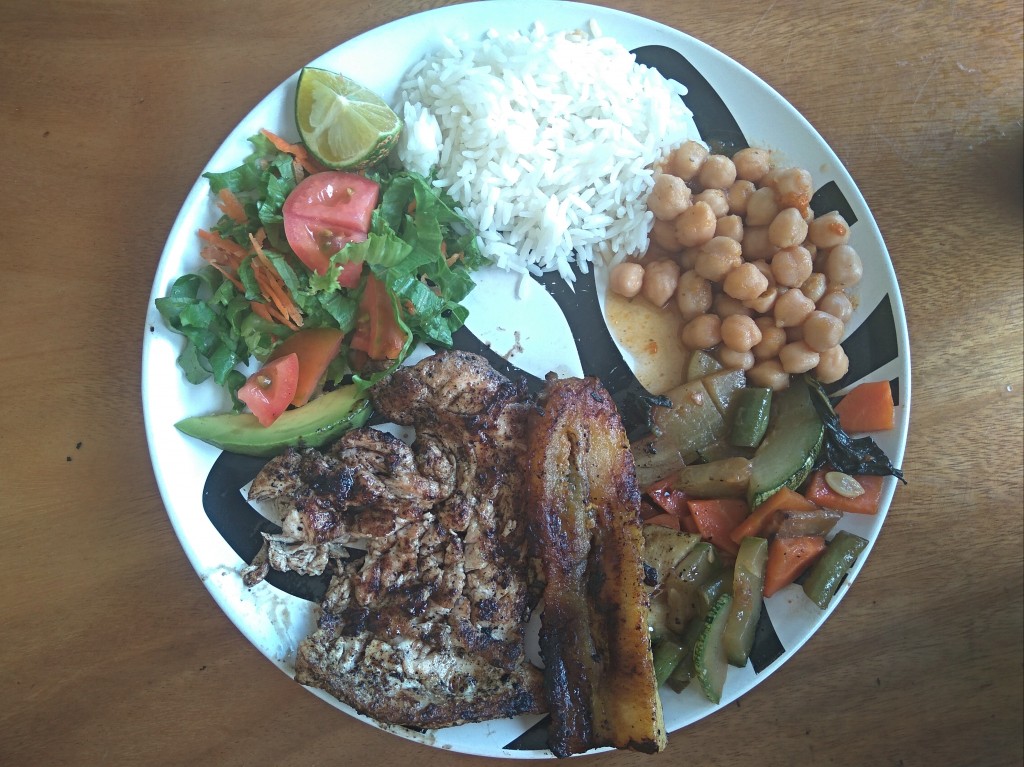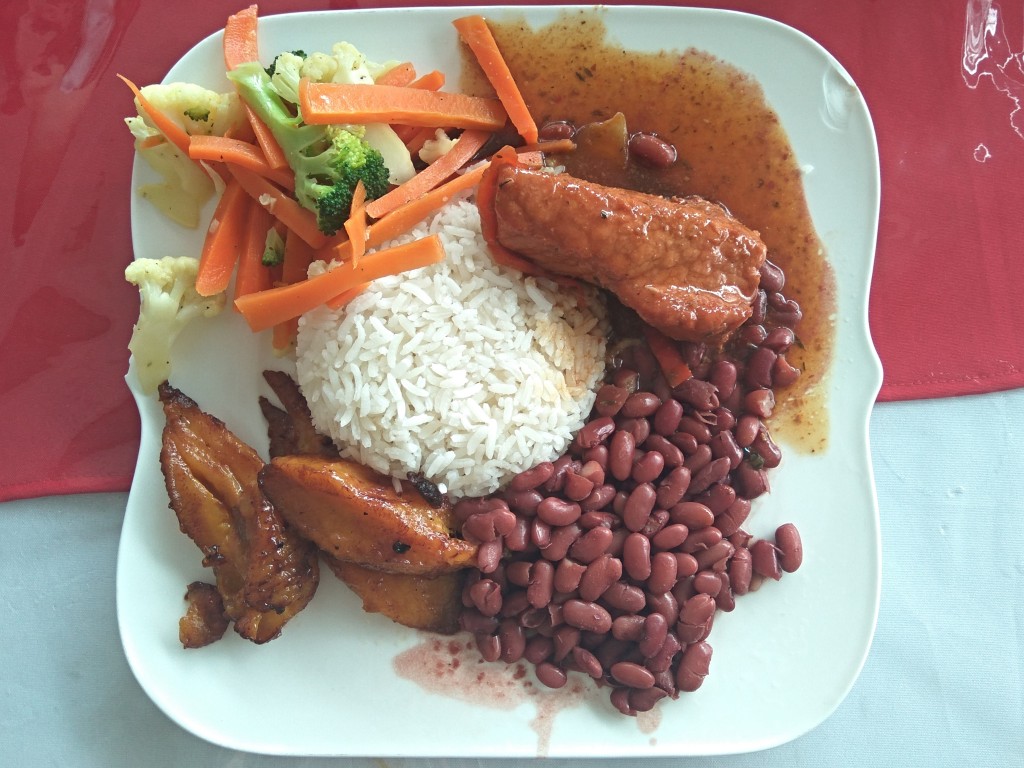EAT IN ASIA / Destinations / Other destinations / Central america / Costa rica
What is Casado in Costa Rica?
Tags: COSTA RICA






































There are two main names of meals that you have to know when you are in Costa Rica. That is Gallo Pinto and Casado. While the first one is what you will probably always have for your traditional Costa Rican breakfast, the second one is eaten for a lunch or dinner.

Where does the name casado come from?
Actually, to be honest, there is no clear explanation for this term. It may derive from the composition of ingredients that are in casado – the number of different smaller plates with rice. Another explication might be, that workers eating in traditional Costa Rican restaurants called sodas, were feeling as at home. There are also other theories, however none of them is truly confirmed. What is sure, is the fact that the name appeared in the second half of the 20th century in San Jose, when a great number of workers arrived.
What is casado?
Casado is a traditional Costa Rican meal that unifies influences from three different cultures – local one, European and African. Casado is a set of different dishes served with rice. All of them are on a one plate, and depending on the region and the restaurant, they may vary. What is the most often, is the set of rice, red beans – frijoles, some kind of a meat, plantains and salad. In some cases, you might also get pasta in a tomato sauce, avocado, eggs, noodles with tuna and mayo, and finally fried banana chips.

When it is about the salad, it strongly depends on what is available, and it can be either fresh, boiled or steamed. The most common one is a fresh lettuce or cabbage salad with a dressing or picadillo – made of yucca or potatoes.

White rice is usually in the middle of the dish. It is soft, boiled in water and with no sauce. Plantains are deep fried and served either in slices or as a whole fruit cut in half and fried. Red beans are boiled and usually not meshed but served as whole grains in a light natural broth. Meat can be served as a whole part (like for example a steak or a chicken breast) or in pieces (pulled pork or beef). Chicken or fish are quite often breaded. Another option is a meat served in a traditional, red sauce. These main ingredients of a casado are surrounded by a lot of other side-dishes, served on the same plate. So, then you will get a small portion of a salad or a picadillo, a fried egg, avocado stripes, some pasta etc.
Meat types in Casado

Almost every meat can be served with casado. You will get pork, chicken, beef or fish. In some sodas, a regular meat could be replaced by an offal substitute. However, it is always clearly marked, which part is going to be served. And that is really good. Thanks to that, you will not be surprised, especially if you dislike liver, kidneys or tongue.
Chicken

Chicken is the most popular type of the meat that is served in casados. Almost all commonly eaten chicken parts can be found in casado. It can be a chicken breast, chicken leg, wing or thigh.

A chicken breast is either fried on a pan, grilled or breaded. Other chicken parts like legs and wings for example are either served breaded or dipped in a sauce. Chicken comes with skin and bones, except the chicken breast, but that is obvious.
Beef
Bisteck as it is called in Costa Rica is the second most popular meat type served with casados. A part of the beef meat, that is a little bit like a steak, is fried on a pan and topped with fried onion rings. It is served either medium or hard. It is never 'raw' or 'bleu'. The meat is rather hard to bite, has a solid structure and is relatively stringy. However, it is good, and has a lot of aroma.

Beef meat can also be served in a traditional Costa Rican red sauce as casado con salsa. The sauce is not spicy and only has slight notes of peppers. It is made with tomatoes, onions, carrots and some other vegetables that make it much more aromatic. To that, coriander is very often added. Thanks to that, the whole composition of the sauce and the meat, gets its unique flavor.

Beef meat is not breaded. Or, it might just be, that we have never had any casado con bisteck like that, but it is still served in some regions or houses. So, if you prefer to omit breadcrumbs, beef might be a good option for you.

Sometimes the beef meat steak is topped with a fried egg. It also happens, that the yolk is leaking, so it is not always hard-fried.
Pork

Pork is one of the most popular meat types too. It is relatively as commonly eaten as beef and chicken. In some regions, pork is dominating. It is served in a whole piece, and usually it is either a rib or a leg part. Pork is prepared almost in the same way as beef. So, it can be fried as a pork steak, served in a Caribbean sauce or in pieces.

As it is in the case of beef, pork meat is hardly ever breaded.

Also, it comes rarer with a fried egg, however it happens. Fried onion rings are quite often added on top of a pork steak.
Fish
Ordering a casado with a fish means getting a fish fillet in breadcrumbs. The breaded layer is usually relatively thick and crispy. Hardly ever, we had casado with a non-breaded fish. All of them were usually served as empanizado. And always, apart from the regular rice and beans set, the fish was accompanied with French fries.

But what is the most interesting thing is, that different meat types might be mixed. Hardly ever it happens in casados, however it might happen, so double check what type of meat is used, if you do not eat beef or pork.

By the way, there are dishes that are called for example rice and seafood, but among mules, prawns and squids you will find chicken parts too. So always confirm it with the waiter.
Side-dishes

A fresh salad and picadillo are the most popular ones. While the first one includes mainly lettuce or cabbage with coriander, cucumber and tomato cubes in a mayonnaise like sauce, the second one – picadillo is either made of a yucca or potatoes.

Picadillo is boiled and served either hot or warm (sometimes it is almost lukewarm). In some places you might get a beetroot salad too. All depends on the availability of ingredients and on the soda.

In other local restaurants, you might also get French fries or pasta.

In the Caribbean region, noodles are mixed with tuna and a mayonnaise sauce. In other regions, noodles are in a mild tomato sauce.
Plantains
As mentioned at the beginning, there is almost no casado without plantains. Plantains can be served in a different way, but they exist almost always.

They can be sliced and deep fried, prepared as thin plantain chips or be served grilled and fried in the same time, but what is different, is that they could be trimmed in half.

Depending on the maturity of the plantain, they are more or less sweeter. Some of them, if selected are these with an almost completely black skin, are extremely sweet. These plantains are called maduros.

You might even wonder, whether they were not additionally sweated. But no, that is their natural taste. Sometimes they are served with a soft skin, but usually they are peeled.
Sauces
If a meat is not breaded or served as a steak, there are two main types of sauces that are used. The Caribbean one and a salsa sauce.

Both are very aromatic, with a lot of herbs and vegetables. The Caribbean sauce includes basically a coconut milk, tomatoes, onions, peppers, garlic, thyme, curry and lime juice. Sometimes, a Worchester sauce is added too. The sauce is delicate and a little bit sweet due to the coconut milk. It is creamy and full of flavors. The red salsa sauce has less ingredients but is still very aromatic.

For preparing this sauce, as it is for the Caribbean one, tomatoes, onions and peppers are used. Apart from that, a lot of cilantro is added, and it is mixed with a unique, Costa Rican Lizano sauce. This salsa sauce is mild in spiciness and the only little spicy note derives from garlic.

A traditional casado is a composition of different flavors and textures. However, it is never very spicy. If you would like a hot version of the casado, you will get an extra chili sauce aside. While usually I choose really spicy options, trying casado as it is, with no extra sauces, is what you should do at the very beginning. Only thanks to that, you would be able to taste casado’s basic flavors. Then, nothing stops you from either adding a chili sauce or any other homemade salsa. Try also this famous Costa Rican Lizano sauce but add it wisely as it has quite a strong aroma.

Mostly recognizable notes in casados are those from cilantro, thyme and curry. Meat with a coconut milk has its unique taste, and tenderness due to the longer process of cooking. On the other hand, breaded meat or fish has its crispiness and crunchiness.

And remember that breaded versions, hardly ever are soaked in oil. They are relatively dry regarding the fat, but still moist inside.
What is sure, you cannot leave Costa Rica without trying their casado!
Date: 2021-04-09
Author: Beti – A passionate traveler and lover of Asian cuisine, especially Thai and Japanese dishes, Bernadeta brings her culinary and cultural experiences to life in her writing. Beyond her travels, she’s an avid technology enthusiast with a deep interest in data processing, merging her love for exploration with analytical insights.
Photographer: Adalbert – An aficionado of computers and photography, Adalbert captures the essence of diverse cuisines with a discerning eye. A connoisseur of rich flavors and particularly fond of meat-based dishes, he combines his technical skills with his passion for the culinary arts in every shot.









